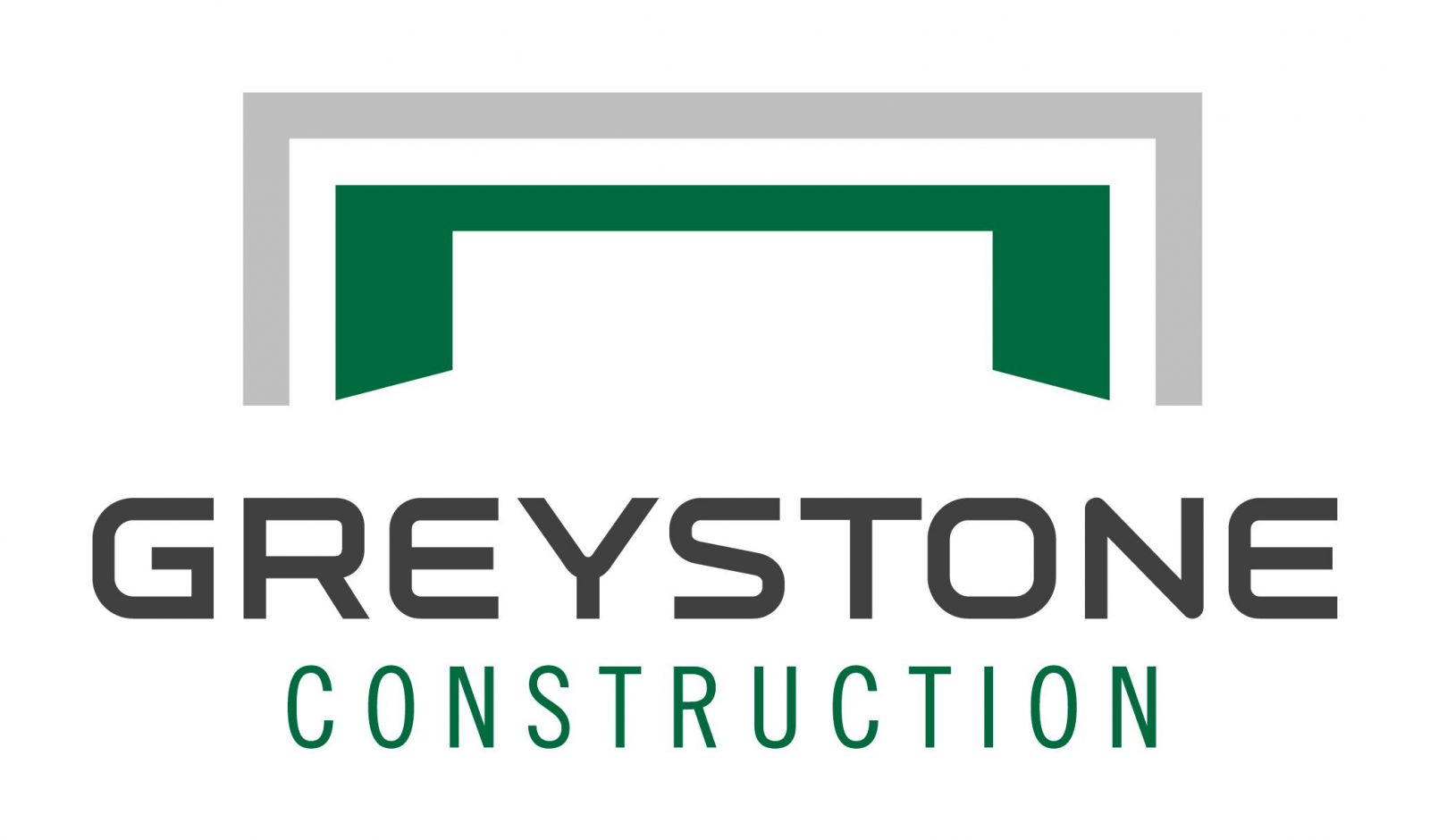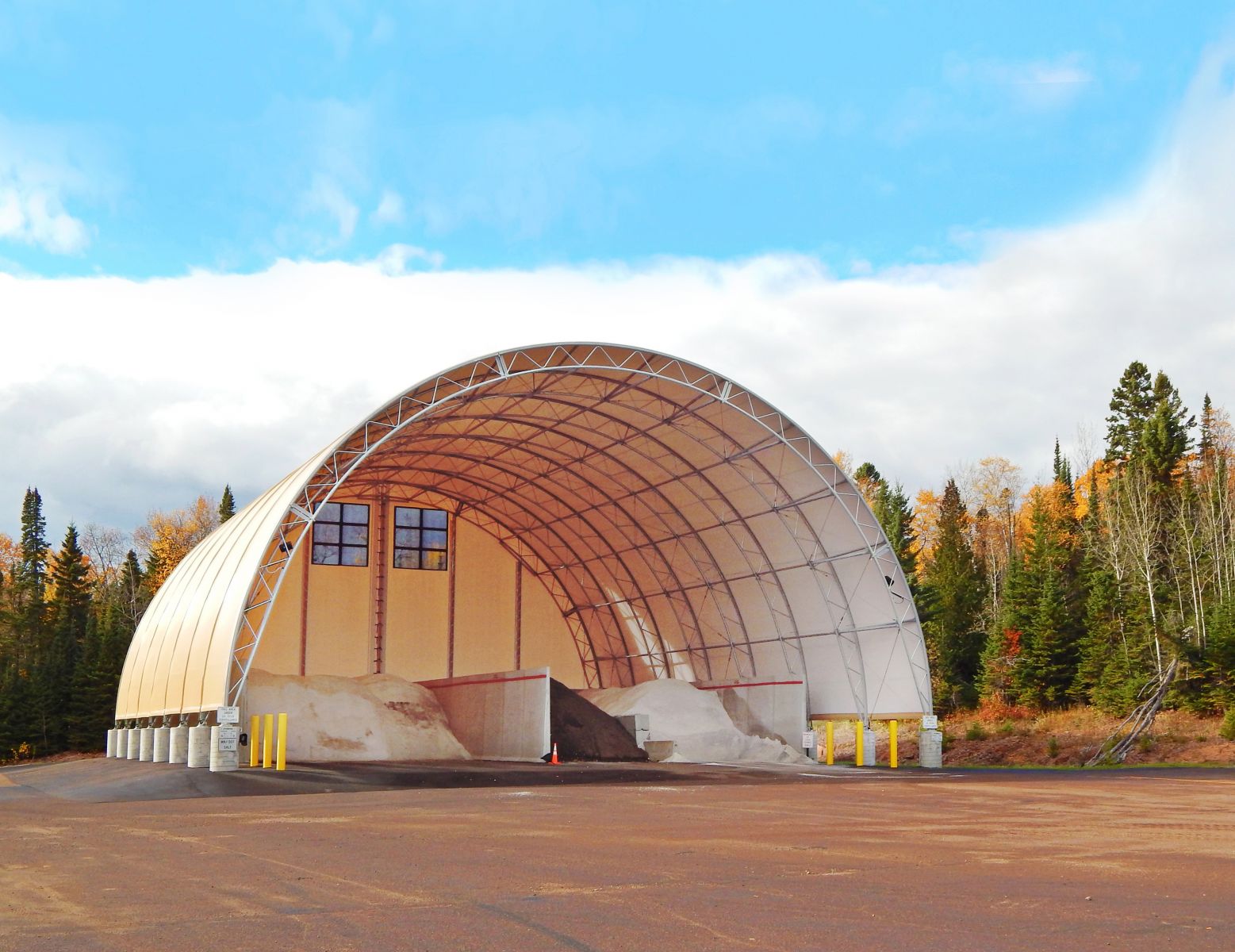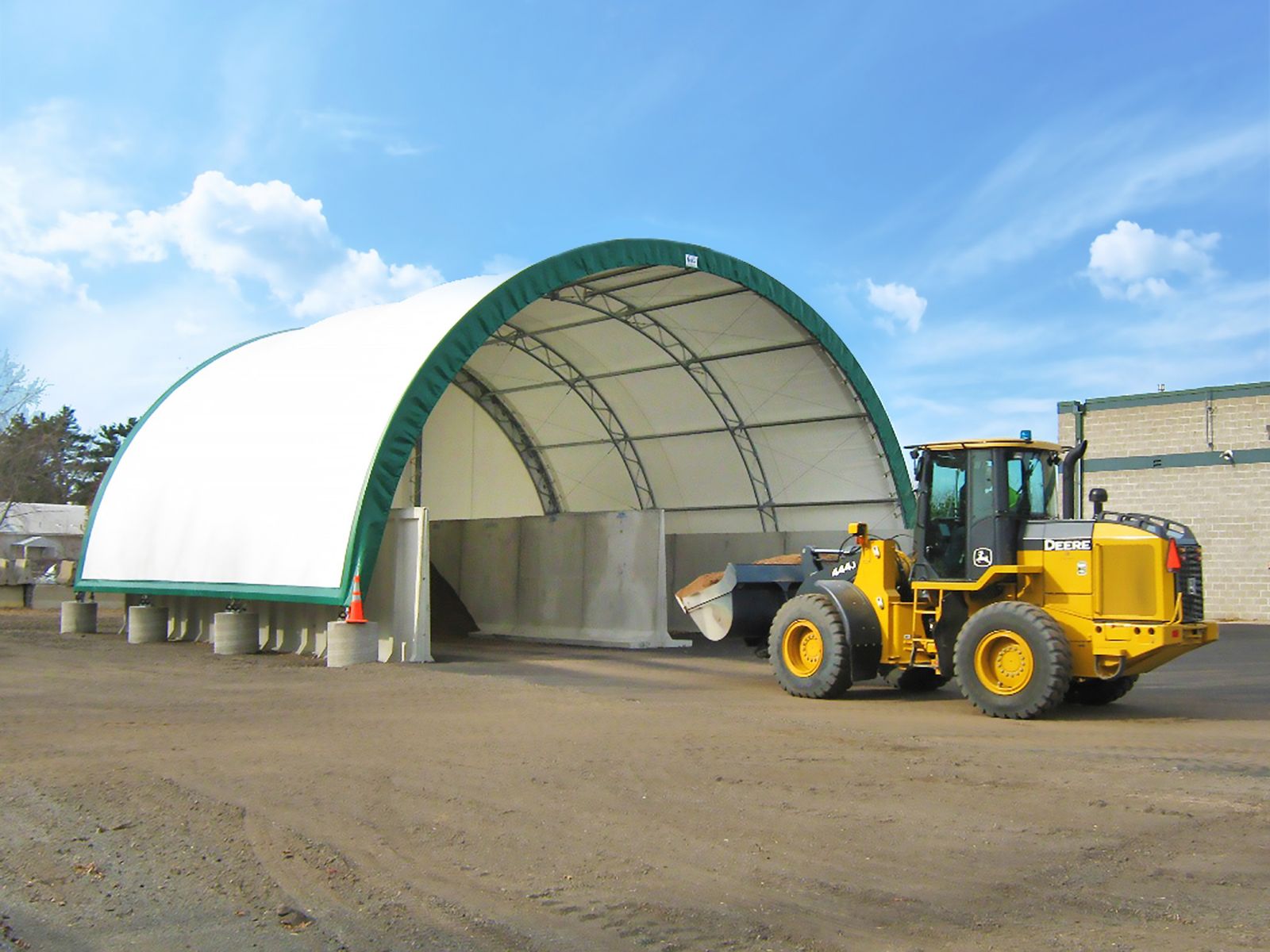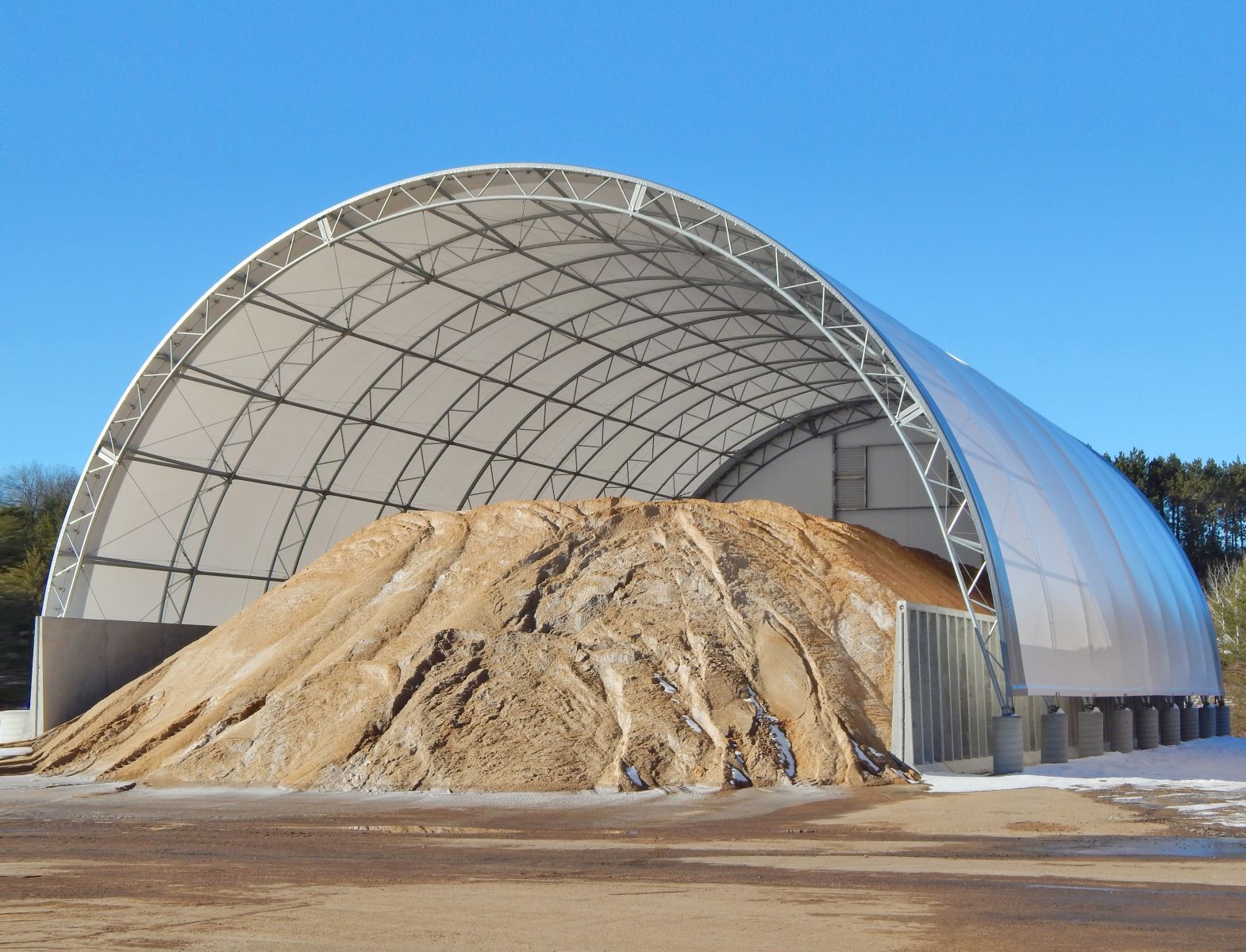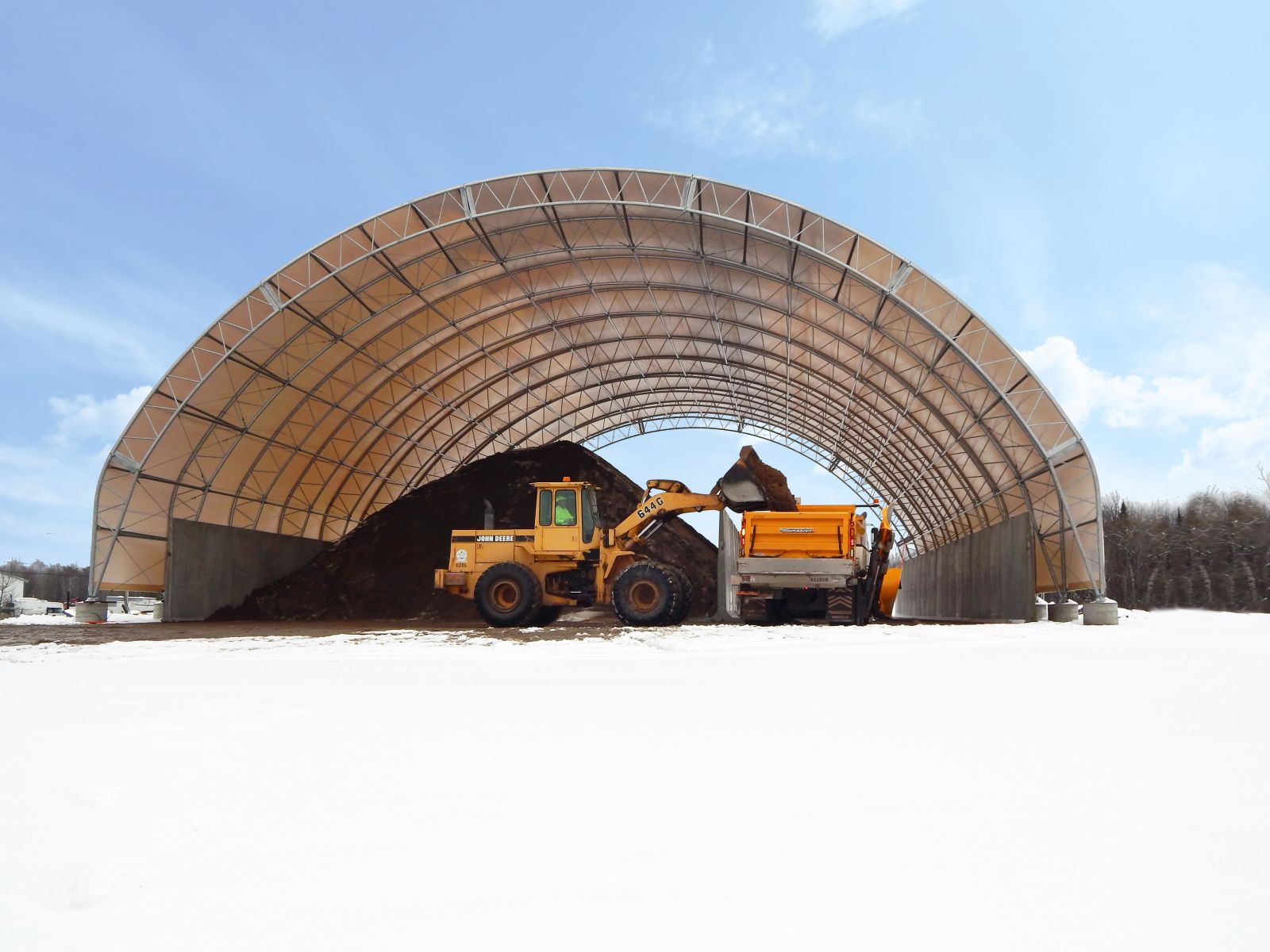Latest News
Facility planning: Designing and building safe, efficient and long-lasting salt and sand storage buildings
Article submitted by Greystone Construction, APWA-MN Chapter Sponsor
When snow flies and ice builds up on roads, will you be ready? Response time, safety and a sufficient supply of salt and sand is critical for winter road maintenance.
“The facility where salt, sand and equipment is stored can become an obstacle or an advantage for street crews during winter storm operations,” says Kevin O’Brien, President and CEO of Greystone Construction. “A salt shed should be designed for safety, efficiency, and longevity.”
Greystone Construction, a general contractor, has built over 1,300 fabric buildings. The Greystone team has worked with hundreds of municipalities across the country over the past 20 years to design and build storage facilities using steel-framed structures with a tensioned fabric roof, also known as “fabric buildings.”
“Fabric buildings have many advantages over traditional structures when it comes to salt and sand storage,” explains O’Brien. “When designed well, fabric buildings are cost-effective, low maintenance, and quick to install—oftentimes our crews can install a building in just days.”
Greystone routinely works with municipalities and DOTs to understand their bulk road salt and sand storage needs and can assist in designing a safe efficient building solution that will last for years.
Photo: Municipal fabric building in northern Minnesota designed and built by Greystone Construction
O’Brien elaborates, “Our process ensures our customers receive a high quality, engineered fabric building with a layout that allows for the greatest efficiency when snow falls and trucks need to be loaded with salt quickly and safely.”
O’Brien shared Greystone’s best practices for planning storage facilities using fabric buildings specifically for salt and sand storage.
“There are a number of factors that we take into consideration when designing a fabric building for salt and sand storage including the project's location (designing to meet local code requirements that meet the international building code), required storage capacity, site constraints, ventilation, reducing risk of corrosive damage, sufficient clearance to accommodate loading equipment, and possible future expansion.”
Designing to meet local load requirements
Any building needs to be designed to meet local wind, snow, seismic and unbalanced snow loads. Fabric buildings are no different. A structurally sound building must follow current International Building Codes (IBC) not just for safety, but for insurability.
“Greystone engineers its buildings to meet current IBC requirements. However, whatever manufacturer or general contractor you work with, make sure they are engineering your building properly for your site-specific location.”
Capacity Requirements
Greystone knows the density and angle of repose of deicing salt -- factoring this in with a customer’s storage capacity requirements and available footprint, their estimating team calculates the most economical building width and length.
“Fabric buildings can easily be expanded so in the future, when a customer requires greater storage capacity, Greystone can easily add additional building length.”
Reducing Risk of Corrosive Damage
Salt is a highly corrosive material and storing it properly is critical to maintain the integrity of a fabric building’s steel frames and components.
“We recommend all building steel be hot-dip galvanized after production. This treatment achieves a much thicker and harder protective surface than in-line galvanizing. It also ensures that the steel trusses are coated both inside and outside after welding is completed. We also recommend a corrosion inhibitor in any concrete panels.”
Ventilation
Proper ventilation is key in reducing corrosion. “In the absence of moisture, corrosive materials would have little to no corrosive effect. You want air movement in your salt storage building to greatly reduce any condensation – this helps to prevent corrosion on everything in and around the building.”
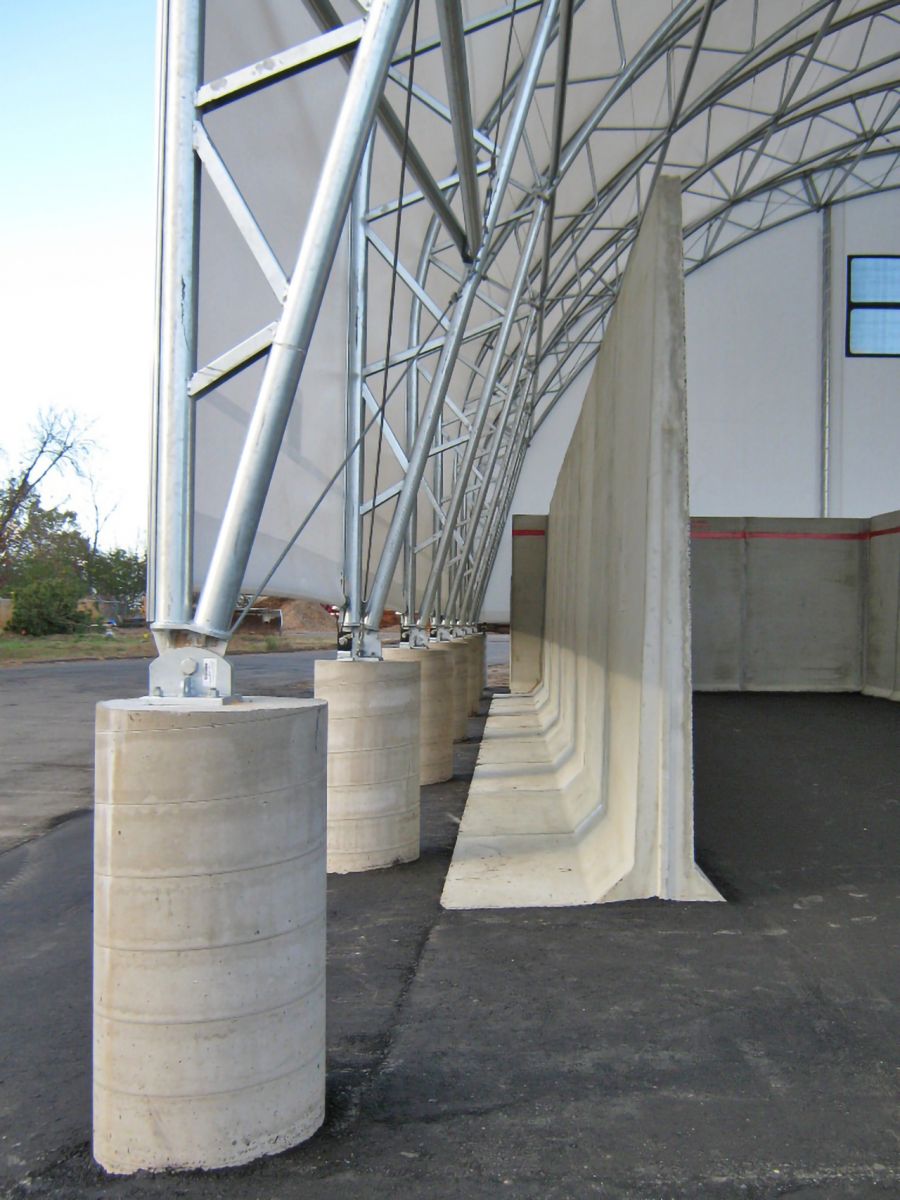 Independent Foundations and Panels
Independent Foundations and Panels
“The combination of independent foundations engineered to carry building loads and pre-cast walls designed to carry commodity loads is oftentimes more economical than cast-in-place poured walls designed to carry both building and commodity loads.”
“This building design is also excellent to reduce corrosion because it keeps salt away from the steel trusses and base plates. It also creates the greatest possible air movement throughout the building.”
Sufficient Clearance
Adequate clear height is a critical factor to ensure maximum storage capacity. More importantly, sufficient clearance is necessary for safe maneuverability of trucks and dumping equipment.
“Proper building clearance is important to reduce the possibility of costly damages to the building from equipment use.”
Photo: Example of Greystone’s design for independent building foundations and pre-cast walls.
Greystone Construction’s team of fabric building experts is prepared to assist municipalities with their salt, sand and equipment storage needs. Call 1-888-742-6837 for a free consultation and quote. Visit www.GreystoneConstruction.com to learn more.
Additional images to show various building sizes and layouts.
What's New
-

Young Professionals Spotlight
March 25, 2024
-

APWA-MN Education Programs
March 25, 2024
-
Apply for the Young Professionals Stipend: Attend PWX Atlanta
February 23, 2024
